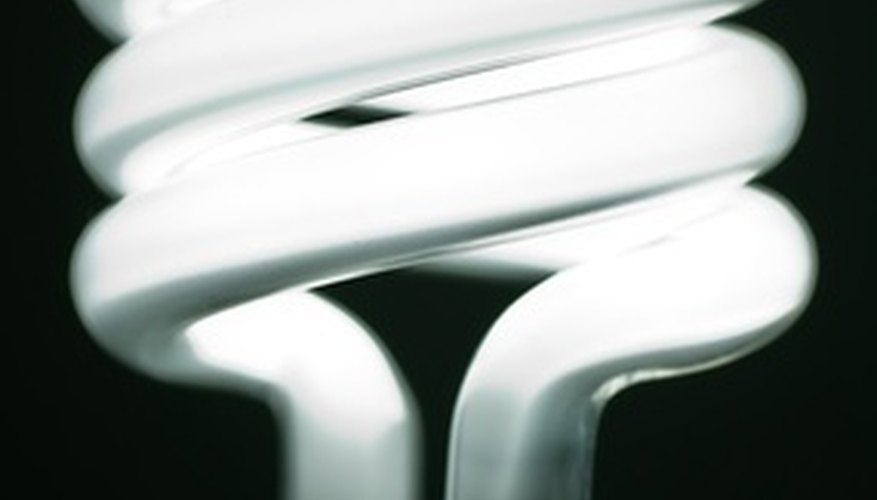Fluorescent bulbs offer highly effective and cost-efficient home lighting options. Though the price of a fluorescent bulb is typically more than that of an incandescent bulb, the cost of operation is significantly less for several reasons. When compared to incandescent bulbs, fluorescent bulbs have longer lifespans, use less energy to make the same amount of light, and create less heat when lit, keeping rooms cool and air conditioning bills low. As long as the power capacity of the circuit allows, fluorescent lights may be connected in the same circuit.
- Fluorescent bulbs offer highly effective and cost-efficient home lighting options.
- As long as the power capacity of the circuit allows, fluorescent lights may be connected in the same circuit.
Locate the electrical box power source for the lighting circuit. Make sure the circuit is powered down and all lights are shut off.
Cut a piece of NM cable and strip off the insulation to identify each of the interior wires. The black and white wires are wrapped in their own plastic sheath. The ground wire is the only bare wire inside the cable.
Connect the wires to the corresponding colour wires in the electrical box. Use the wire connectors to splice the like-coloured wires together.
- Connect the wires to the corresponding colour wires in the electrical box.
- Use the wire connectors to splice the like-coloured wires together.
Pull the loose end of the existing piece of NM cable, as well as one end of a fresh piece of NM cable and the wires from the first fluorescent fixture into the electrical box. You now have three loose ends of each coloured wire inside the box.
Use the wire connectors to splice together the three black wires, white wires, and bare wires together with their like-coloured partners.
Cover the first fixture with its cover and the electrical box with its face plate.
Pull the loose end of the second piece of NM cable to the second fluorescent light fixture. Repeat the connection set up for the second fixture as outlined in Step 5.
